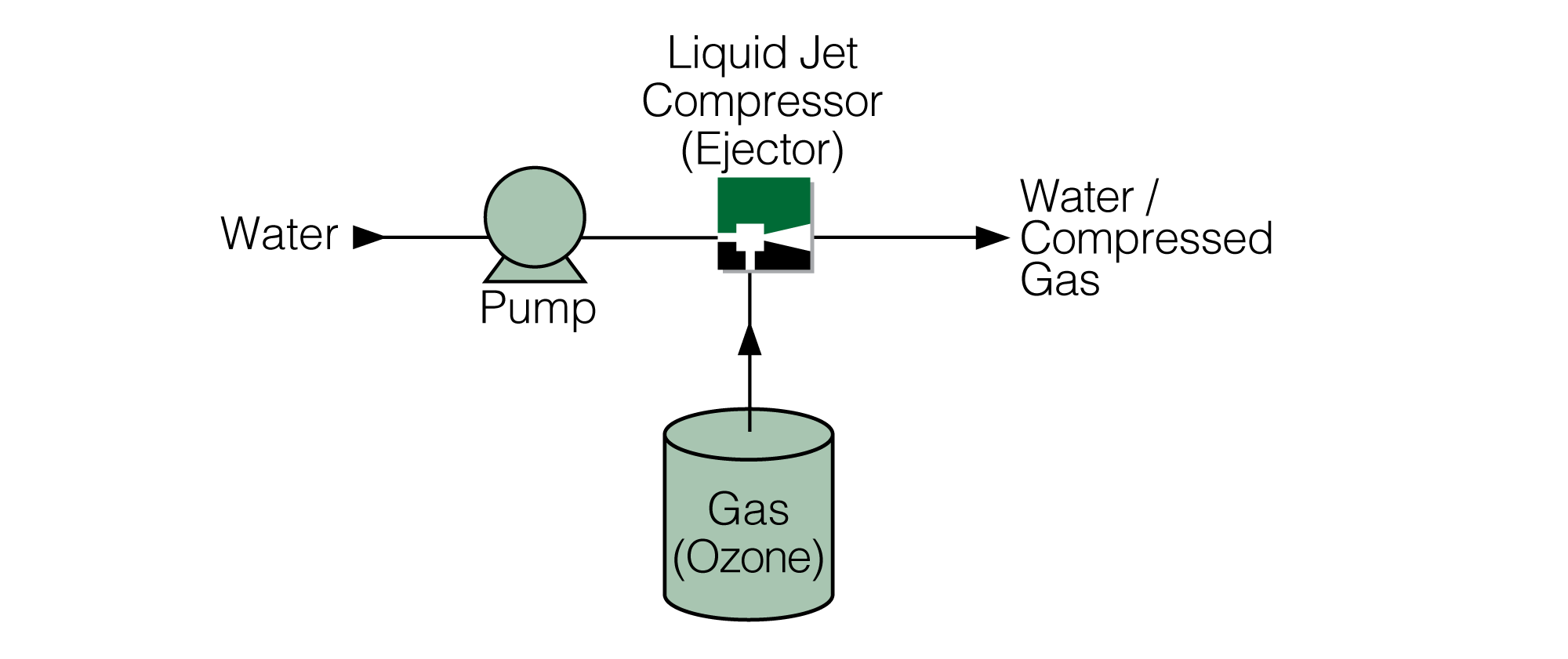Transvac Liquid Jet Compressors have been extensively used for entraining ozone and atmospheric air in water treatment applications. Using liquid as the motive force Transvac Jet Compressors can accurately entrain and mix air or gas in-line and discharge against an elevated back pressure.
In operation a high velocity jet of pressurised liquid discharged from the motive nozzle produces a region of low pressure in the suction chamber that entrains the secondary gas. The two streams then thoroughly mix in the throat before the resulting mixture flows through the diverging cone to regain some pressure in order to overcome system discharge heads.

Because of its excellent disinfection and oxidation qualities, ozone is widely used for drinking water treatment. Ozone can be added at several points throughout the treatment system, such as during pre-oxidation, intermediate oxidation or final disinfection.
Usually, it is recommended to use ozone for pre-oxidation, before a sand filter or an active carbon filter (GAC). After ozonisation these filters can remove the remaining organic matter (important for final disinfection).
This combination has several benefits:
In essence, ozone is nothing more than oxygen (O2), with an extra oxygen atom (O3). This extra oxygen atom will bind (oxidation) in a split second to any component that it comes into contact with. Ozone can oxidize with all kinds of materials, but for water treatment we target odour and microorganisms like viruses, mould and bacteria.
Because ozone is made of oxygen and reverts to pure oxygen (after oxidation), it vanishes without trace once it has been used. Compare this with other disinfectants!
Standard materials of construction include rubber-lined, PVCu, PP, PTFE, PVDF, hastelloy, titanium, stainless steel and carbon steel.
Connections included flanged, screwed, plain, hosetail and bauer.
